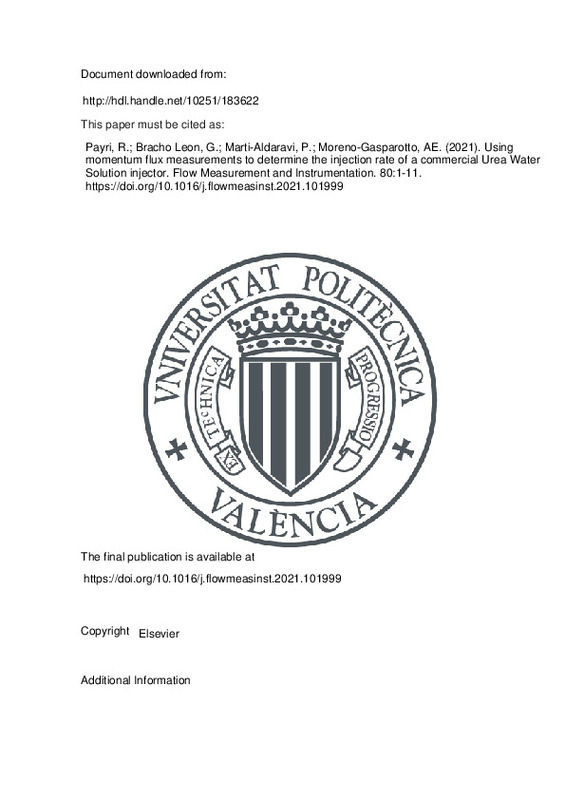JavaScript is disabled for your browser. Some features of this site may not work without it.
Buscar en RiuNet
Listar
Mi cuenta
Estadísticas
Ayuda RiuNet
Admin. UPV
Using momentum flux measurements to determine the injection rate of a commercial Urea Water Solution injector
Mostrar el registro completo del ítem
Payri, R.; Bracho Leon, G.; Marti-Aldaravi, P.; Moreno-Gasparotto, AE. (2021). Using momentum flux measurements to determine the injection rate of a commercial Urea Water Solution injector. Flow Measurement and Instrumentation. 80:1-11. https://doi.org/10.1016/j.flowmeasinst.2021.101999
Por favor, use este identificador para citar o enlazar este ítem: http://hdl.handle.net/10251/183622
Ficheros en el ítem
Metadatos del ítem
| Título: | Using momentum flux measurements to determine the injection rate of a commercial Urea Water Solution injector | |
| Autor: | Moreno-Gasparotto, Armando Enrique | |
| Entidad UPV: |
|
|
| Fecha difusión: |
|
|
| Resumen: |
[EN] The Selective Catalytic Reduction (SCR) technology allows the transformation of the Nitrous Oxide emissions present in exhaust gases into gaseous nitrogen and water. For a proper operation of the SCR, a urea-water ...[+]
|
|
| Palabras clave: |
|
|
| Derechos de uso: | Reconocimiento - No comercial - Sin obra derivada (by-nc-nd) | |
| Fuente: |
|
|
| DOI: |
|
|
| Editorial: |
|
|
| Versión del editor: | https://doi.org/10.1016/j.flowmeasinst.2021.101999 | |
| Código del Proyecto: |
|
|
| Agradecimientos: |
This work has been partially funded by Spanish Ministerio de Ciencia, Innovacion y Universidades through project RTI2018099706B100.
The author A. Moreno thanks the Universitat Politecnica de Valencia for his predoctoral ...[+]
|
|
| Tipo: |
|







![[Cerrado]](/themes/UPV/images/candado.png)


